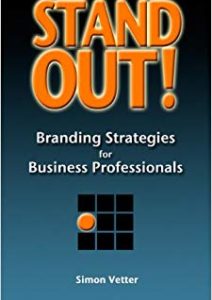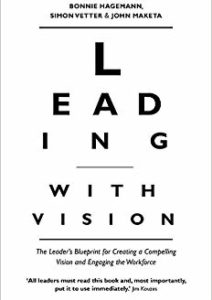Through my leadership coaching of CEOs, marketing professionals, and sales leaders, I have learned that changing behavior is not always about doing more. It is often about doing less—avoiding certain behaviors and actually curtailing certain actions in an effort to have more of an impact as a leader.
As an illustration, here are three common mistakes I have observed through my coaching, actions where doing less was the answer. I have used actual examples from my experience, changing the names, of course. Although these are specific instances, the problems they represent are all too common, and I think you’ll find that the solutions can be broadly applied as well.
Example #1: “Mean Mike”
When I began working with Mike, he was the CEO of a US sales organization that had, in that year, lost $20 million. Needless to say, Mike needed help.
A standard part of my coaching process is to get feedback from company stakeholders and get their view of my coachee’s management. I interviewed 12 individuals who worked with Mike, and they all reported that he was a very driven, passionate leader who demonstrated high goals and high standards.
These stakeholders also stated, though, that they didn’t trust Mike.
I dug deeper to get to the bottom of this situation. The people who reported directly to Mike told me of two incidents that had happened within a year and had been the catalysts for this lack of trust. In the first of these incidents—the one that started the lack-of-trust ball rolling—Mike had just come back from traveling and was tired and stressed out. He was talking to a project manager about a project that had really gone south. Mike was frustrated and angry, and dressed down the project manager out in the hall where everyone could hear, yelling and using abusive language.
Because other employees clearly heard what was going on, the story quickly made the rounds, reinforced only a short time later by another very similar incident. The result: Employees working in the organization didn’t trust Mike—they didn’t want to be yelled at. They were reserved and hesitant when it came to dealing with him.
I collected the feedback, put it all together, and addressed the issue directly with Mike He acknowledged that he had behaved badly on these two occasions. Interestingly, he had no idea that his behavior had created such an impact with his employees.
To address the issue, Mike embarked on what he called his “personal anger management project”. He established outlets for his frustration that didn’t target his colleagues, such as walking around the block or running. He decided to be more positively engaged with those in his charge.
The result? I coached Mike for a year, and according to his stakeholders he made significant changes in his behavior. They reported that Mike was much more in control of his emotions, involved his leadership team in important decisions, and was much more capable of empowering others.
Financially, the company turned around. At the end of the coaching year, they had recovered from being $20 million in the hole to breaking even. Just two years later Mike has built a high-performing, trusting team and the company made $30 million in profit.
Example #2: “Darcy Solves Your Problem”
Darcy was the head of a sales organization consisting of about 150 people, and a standout example of a very common problem I have found with highly successful executives.
Darcy loved her job and was extremely good at it. But she worked 70 to 80 hours a week, and when I started working with her I could see in her face she was overwhelmed, stressed out, with far too much demand on her time. She admitted, “I love my job, but I don’t have a life. I get up early in the morning, I leave late in the evening. On weekends I work Saturday and Sunday on my laptop at home.”
When I solicited Darcy’s managers for feedback, I made a very interesting discovery: Darcy was an extremely good problem solver. A manager would come to her with an issue, and she would provide a ready solution. So what would happen the next time that a manager had a problem? They always came back to Darcy.
This practice engaged Darcy in projects and “fighting fires” all throughout the company. Her biggest strength—solving problems—had become her biggest liability in a leadership and management role.
I coached Darcy to make some fundamental changes. She needed to stop enabling her managers to come to her with problems. Instead, she began teaching her managers to be better solution providers—and to come to her with solutions, not problems. Every month she sat down with them and coached them, helping them develop the skills that made her such an effective problem solver. She was then able to spend far more time on strategy and long-term planning — instead of being mired in day-to-day firefighting.
I worked with Darcy for a year, and at the end of the year she reported that the company had met or exceeded all of its business targets. Darcy herself was able to rescue herself from drowning in work—in fact, despite the fact that her staff had grown to 300, she now worked 60 hours per week instead of 70 to 80. She left work an average of 2 hours sooner every day. She began enjoying life once again.
Example #3: “Know-It-All Bill”
Bill was the head of marketing in a sales and marketing organization. He had a team of 20 people, and they asked me to coach him because the company offered my coaching as a service. The feedback I got from Bill’s employees was that he was incredibly smart and highly intelligent. He was always 10 steps ahead of a problem, and could combine complex issues in his head and come up with sound solutions.
But interestingly, it was his intelligence that had become a big liability in his leadership role. How? One of my coaching sessions with him revealed the reason. I started to give him a tip and some advice—and in the middle of my sentence he cut me off and finished my sentence. Apparently that’s also what he routinely did with his marketing people.
The feedback I obtained from 15 stakeholders confirmed this behavior and its effects. Although highly intelligent, they said Bill was a horrible listener. He showed people how smart he was to a fault—in fact he was known as the “know-it-all guy.”
The effect on Bill’s team was that marketing meetings were not very productive. There was not a lot of creativity and flow of ideas because the top guy always had the answer. People became disengaged and demotivated because their ideas were not heard, were not listened to, and not acted upon. So after a few conversations they finally said, “Why should I bring my ideas? Bill always knows better than me.” Morale was very low.
I coached Bill to stop showing that he was the smartest guy; even though he was the smartest, he didn’t have to constantly demonstrate it. He learned how to be a better listener, to be more empathetic, to let other people finish their thoughts, to stop before responding.
From my experience, it’s a very common pattern of extremely smart people — especially those who get promoted into leadership roles. They have to stop being the smartest in the room, and let other people participate in the conversations.
After about six months of coaching, one of the managers said, “It’s amazing! Our marketing meetings have become so much better because Bill, the top guy, doesn’t do all the talking.” The team became more innovative, more creative, and more effective. People were more motivated and engaged because they were heard.
Bill himself said, “You know what? I don’t have to work so hard! I let people talk more so I can sit back.”
Do Less to Do More!
Sometimes you have to stop doing things and avoid certain behaviors to be more effective. It’s my experience that often in sales and marketing organizations, the best performers get promoted. They think their behaviors will continue to result in that leadership role, and that’s not always the case.
I hope I’ve helped you identify some of the behaviors you might like to change — your worklife can improve dramatically!













